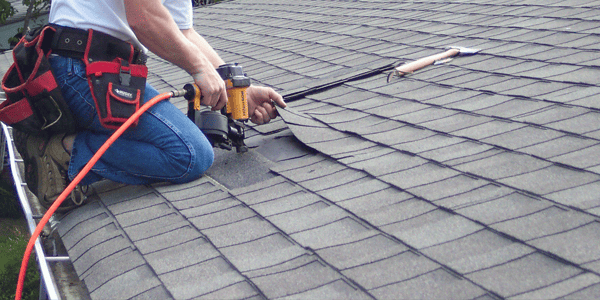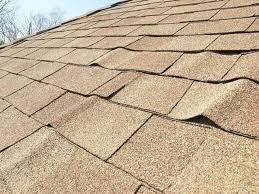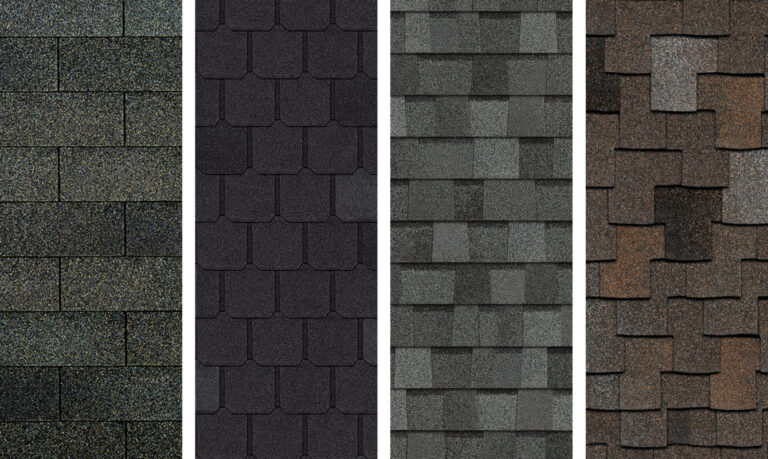A high-quality, properly installed roof is built to last. Even still, roofs aren’t invincible. By scheduling annual roof inspections and staying on top of homeowner maintenance, you can prolong the life of your roof.
However, most roofs are at the mercy of the weather. After intense storms or gradual wear and tear over many years, your roof can sustain damage. It’s vital to watch for these 15 signs of roof damage so that you can schedule roof repairs ASAP before it turns into a larger, more expensive issue.
Types of Roof Damage on Asphalt Shingles
Asphalt shingles are the most popular roofing material in the country and our material of choice here at Tidds Roofing. Modern architectural shingles can last up to 30 years with proper maintenance and lucky weather. However, asphalt shingles can develop these damages, especially as they age past 12 years old.
1) Curling Shingles
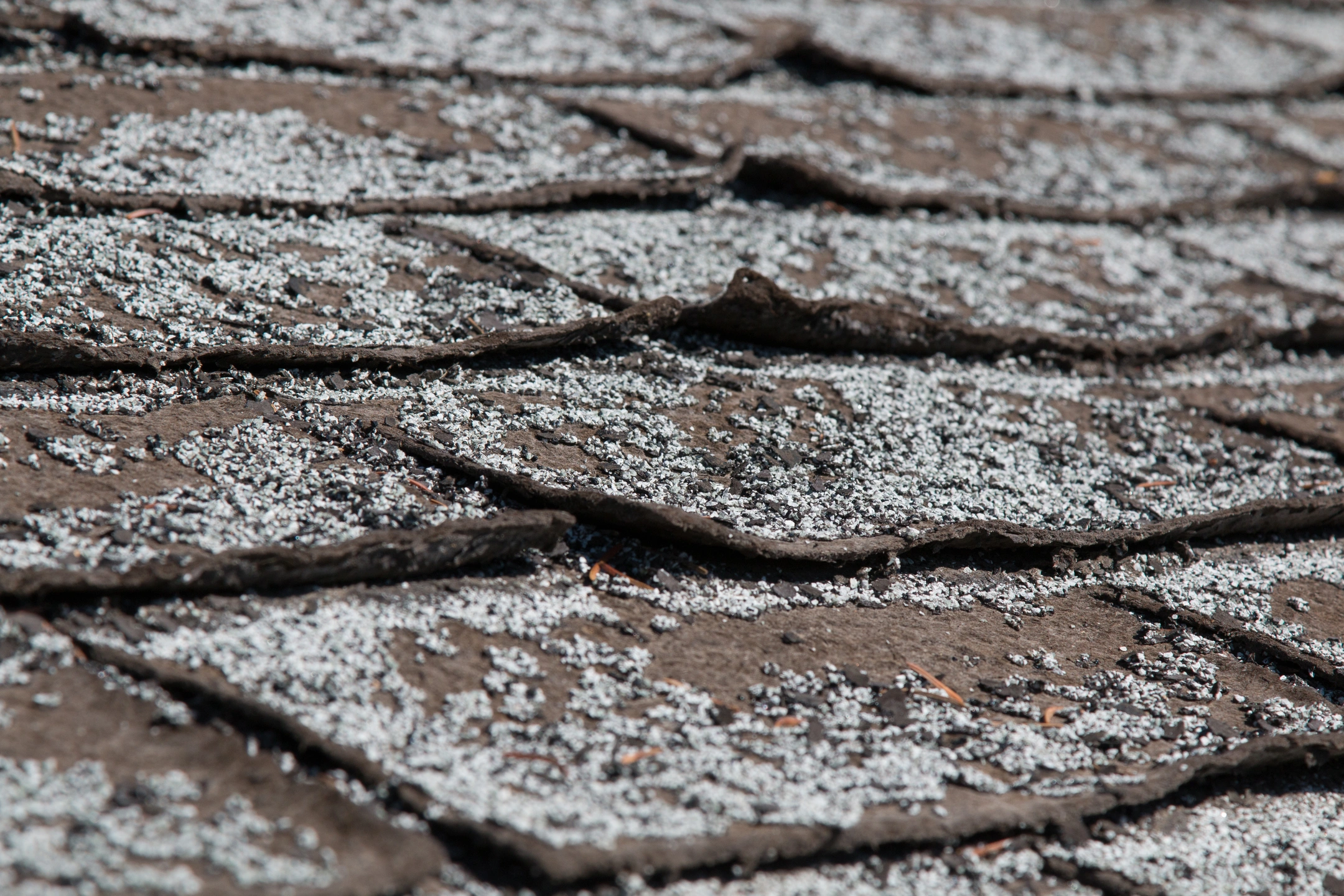
Bad attic ventilation is at the core of curling shingles. You can pinpoint curling shingles by lifted corners that peel upwards. They can also be caused by excess moisture on the roof deck. This issue is most common when asphalt roofs are nearing the end of their lifespan.
2) Cracked Shingles
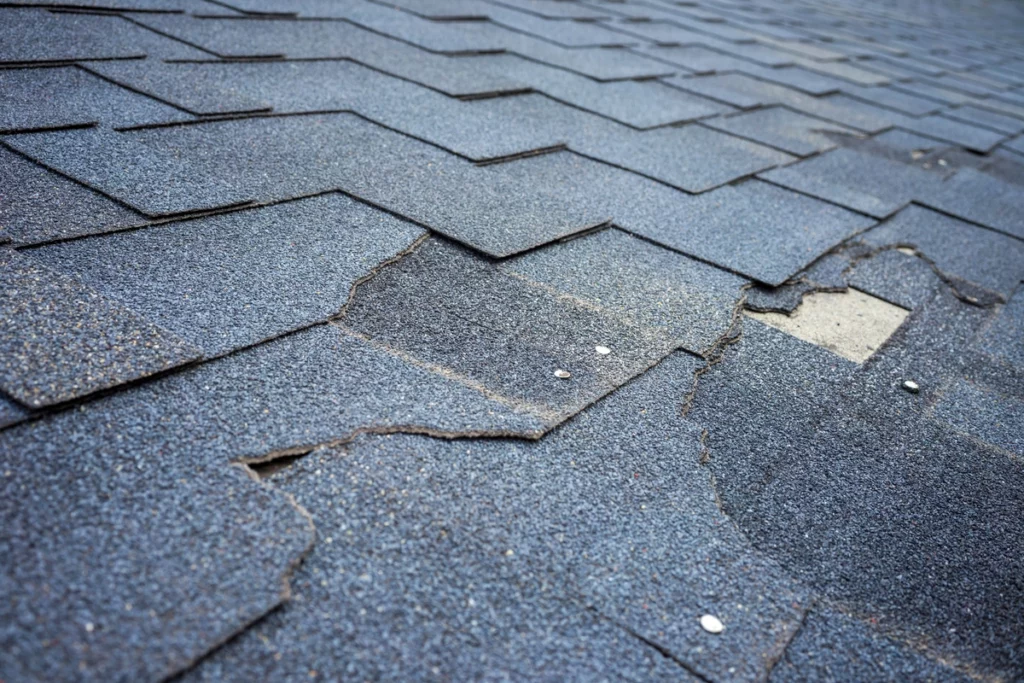
Splitting shingles are most commonly caused by temperature changes. When the weather gets warmer, the shingles expand, and when it gets colder, the shingles contract. This process can cause the shingles to tear.
3) Blown-Off Shingles
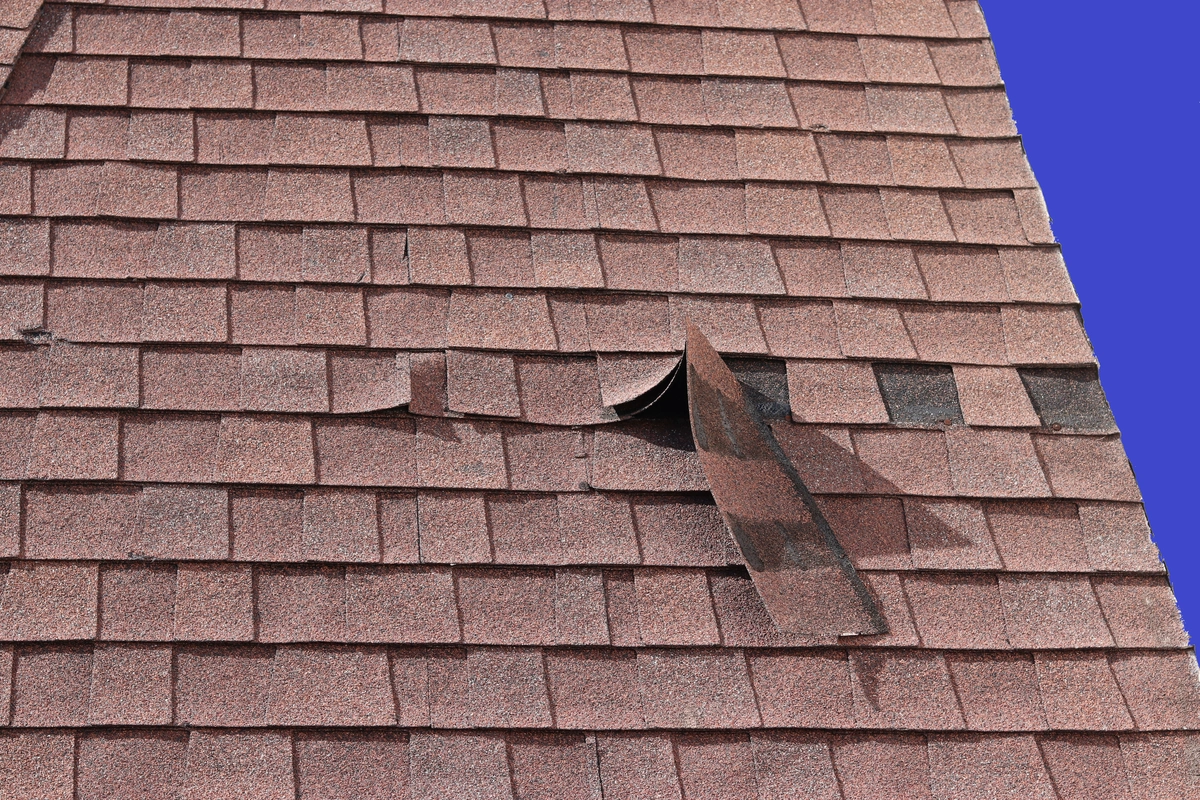
Wind storms are not very friendly to asphalt shingle roofs— especially older roofs or those built with cheaper 3-tab shingles. A strong gust of wind may blow off a shingle (or a few!). You can often spot this issue from the ground, and it should be patched and repaired right away to prevent water damage.
4) Shingle Granule Loss
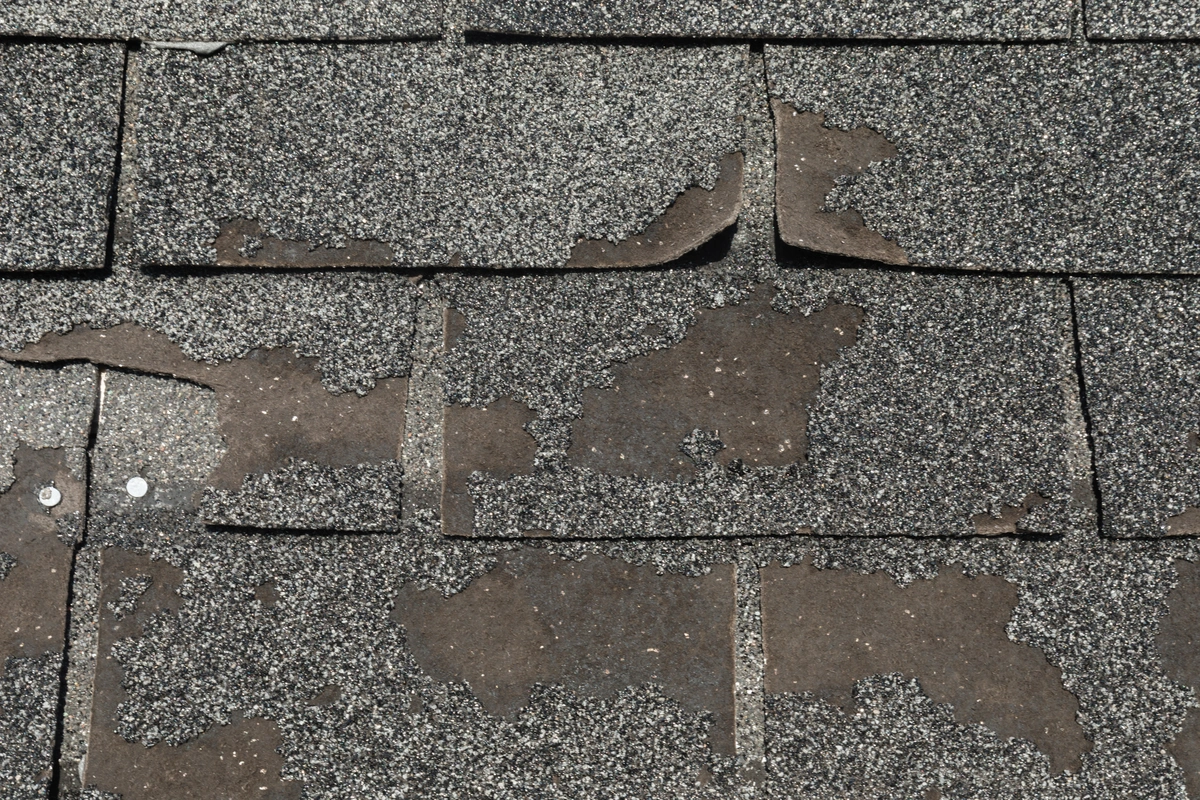
When a hail storm strikes, the ice can dent your shingles. Most notably, the granules, which make up the sand-like outer layer, get knocked off by the hail. The result looks like small bald spots scattered across your roof. The granules act as the primary layer of UV protection, so if you sustained hail damage, consider filing an insurance claim.
5) Lifted Edges
Sometimes, roofing nails or the caulk can come loose. You may notice certain shingles flapping in the wind. This means that the edges are no longer secured. This is a simple fix for a roofing contractor to complete.
Damage on Other Roofing Materials
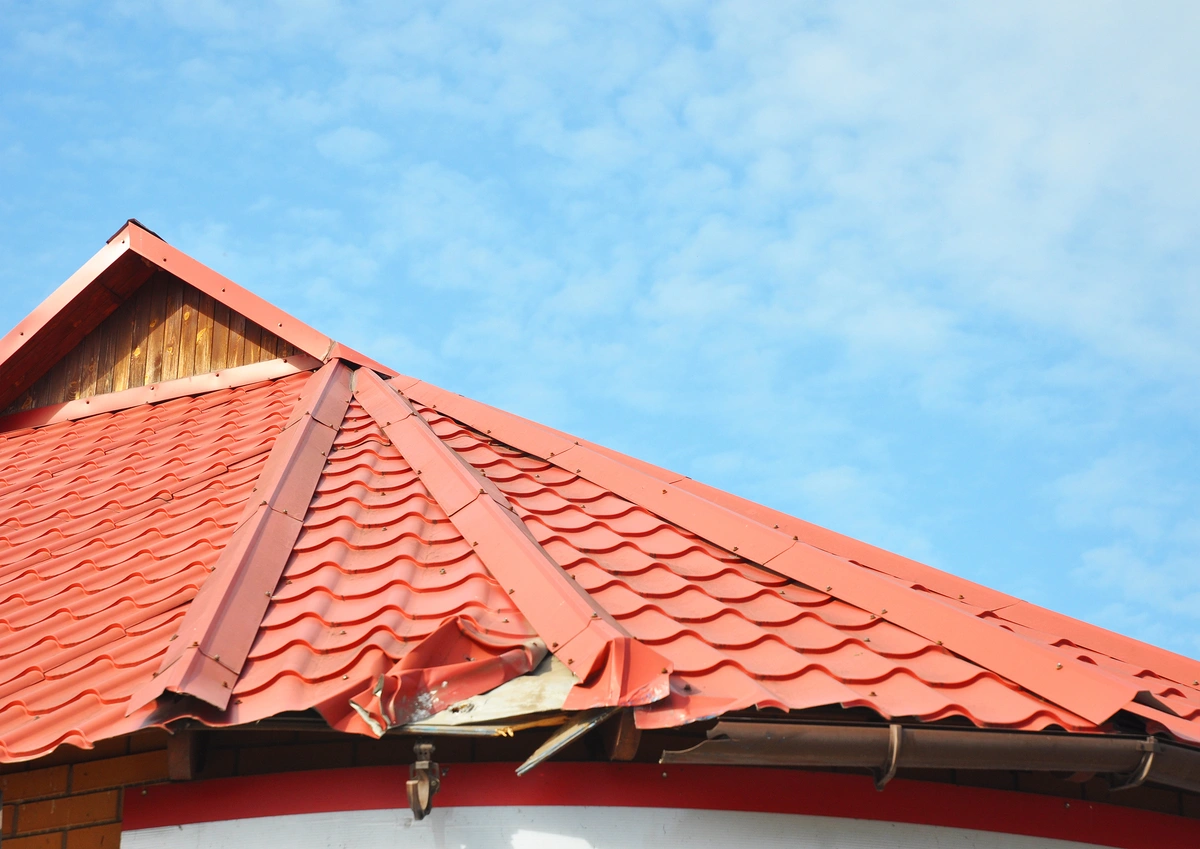
Even though asphalt shingles are the most popular material, not everyone has an asphalt roof. The following instances of damage more commonly affect materials like:
- Metal
- Cedar shakes
- Clay tiles
- Flat roofs
6) Rusted Metal
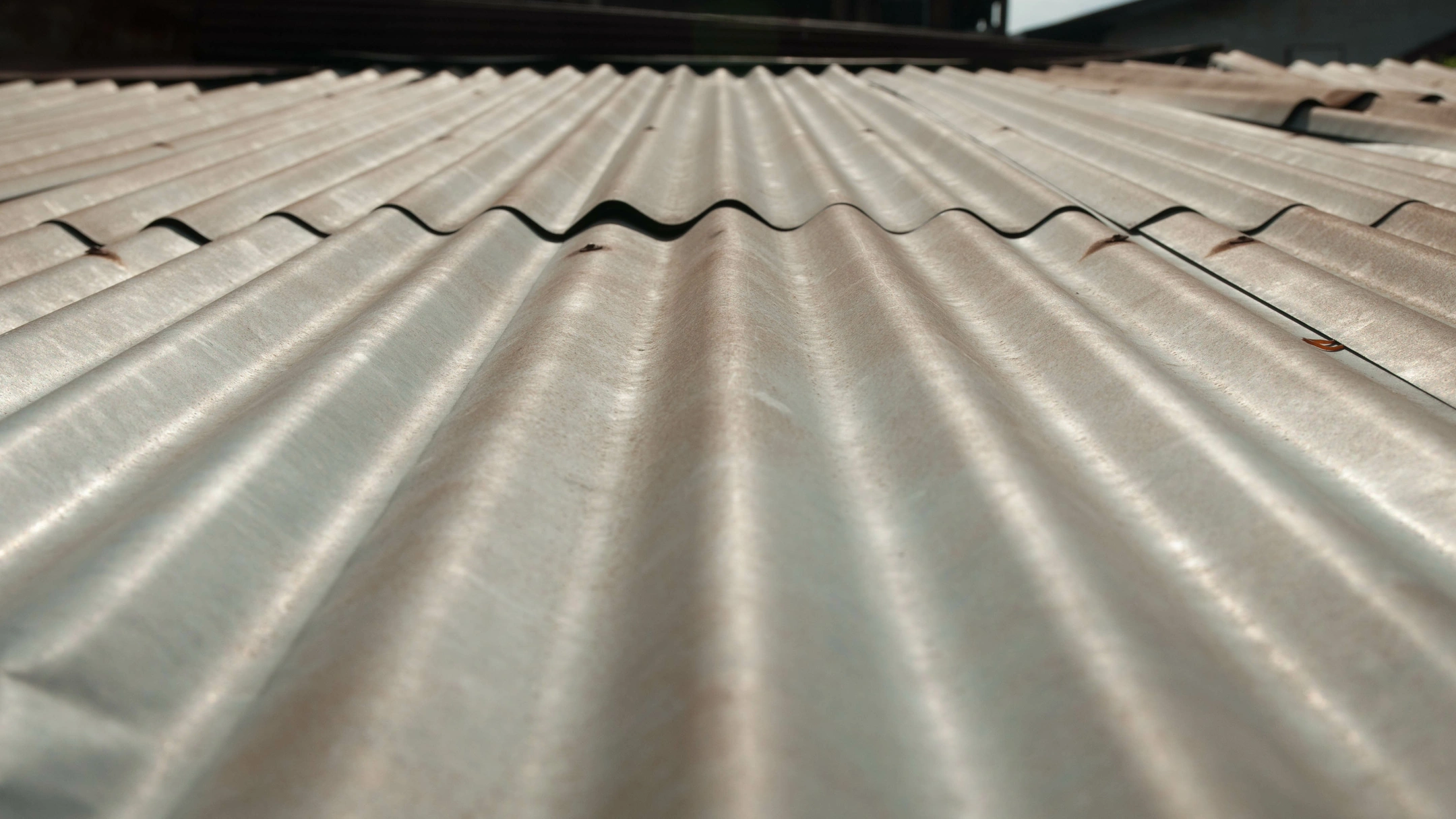
Metal roofs often last more than 50 years, and they stand up well to wind and hail. Roof damage is less common on metal roofs, but they can experience rusting when exposed to excess moisture. The correct metal coatings help prevent this.
7) Splitting & Rotting Wood Shakes
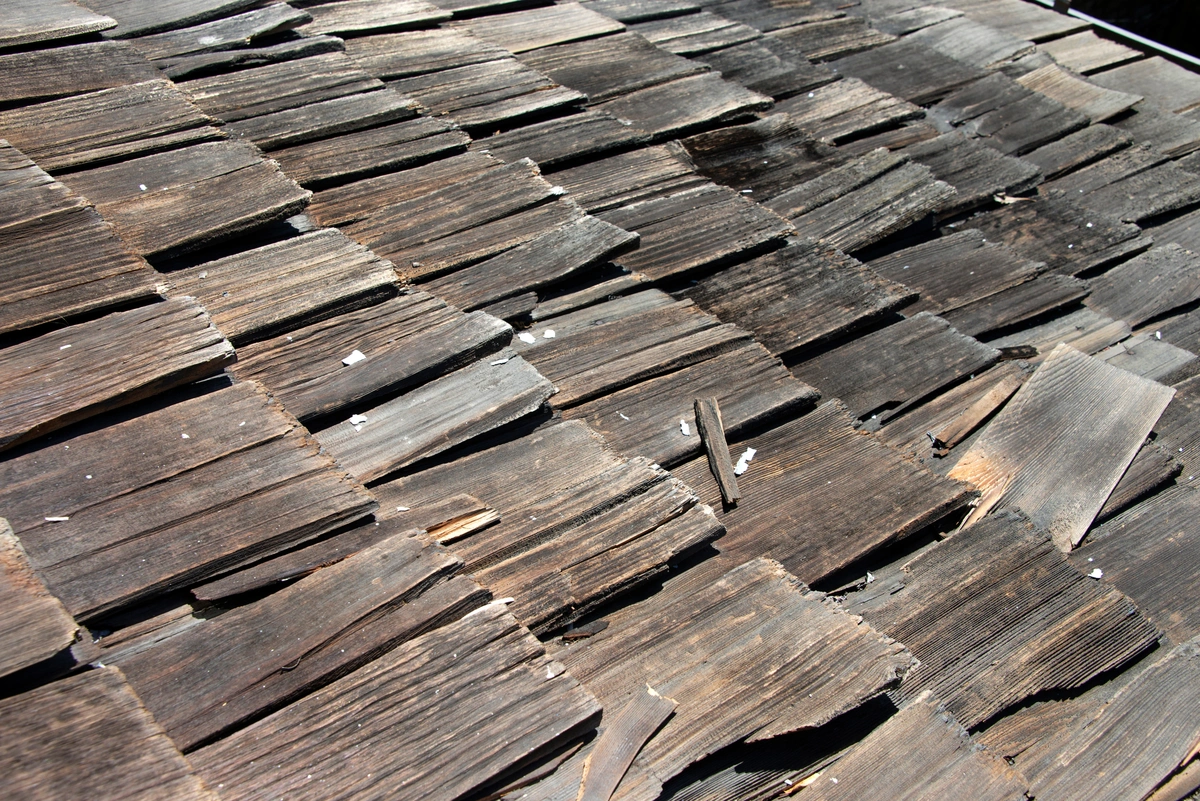
Cedar shakes or wood shingles are aesthetically pleasing, but they’re more finicky than other materials. One of the most common issues that arise with cedar shakes is splitting after hail impact. Additionally, they can rot when exposed to the elements.
8) Cracked Tiles
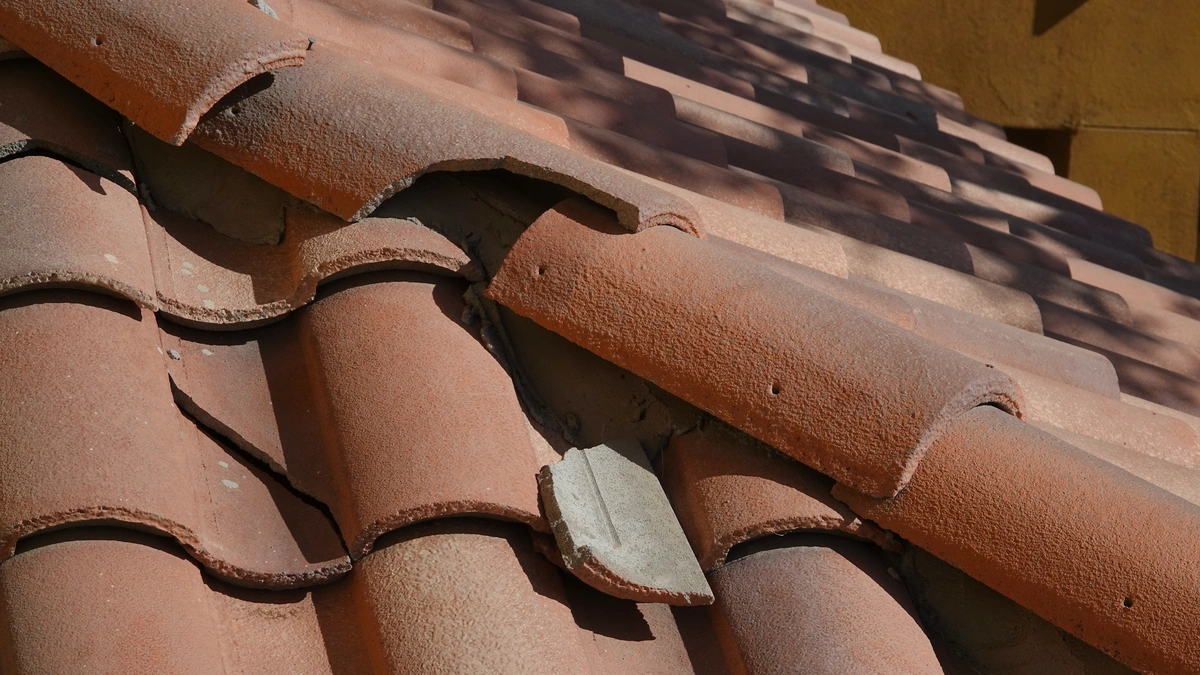
Clay, concrete, and slate tiles are incredible materials that can last up to 100 years or more. They’re very durable and rarely sustain damage. However, certain weather impacts like hail may cause a few tiles to crack. Be sure to have the tiles replaced as soon as possible.
9) Pooling Water on Flat Roofs
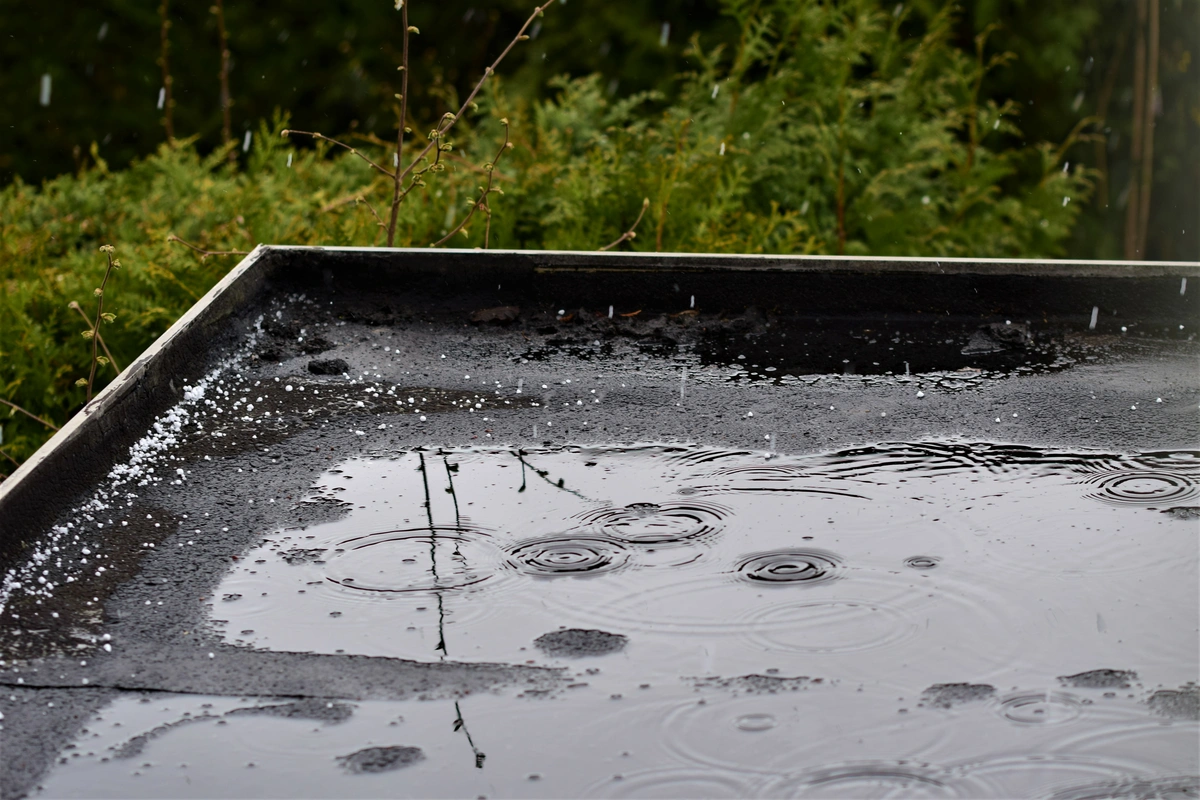
Flat roofs are most common on commercial buildings and multi-family housing structures. Flat roofs are technically not perfectly flat because they need a low slope in order to properly shed water. If you notice pooling water on your flat roof, that means the drainage is not working correctly.
Damage That Can Affect Any Roof
While some damage is specific to the particular type of roofing material, other types of roof damage don’t discriminate. No matter your roofing material, keep an eye out for these universal signs of damage.
10) Damaged Flashing
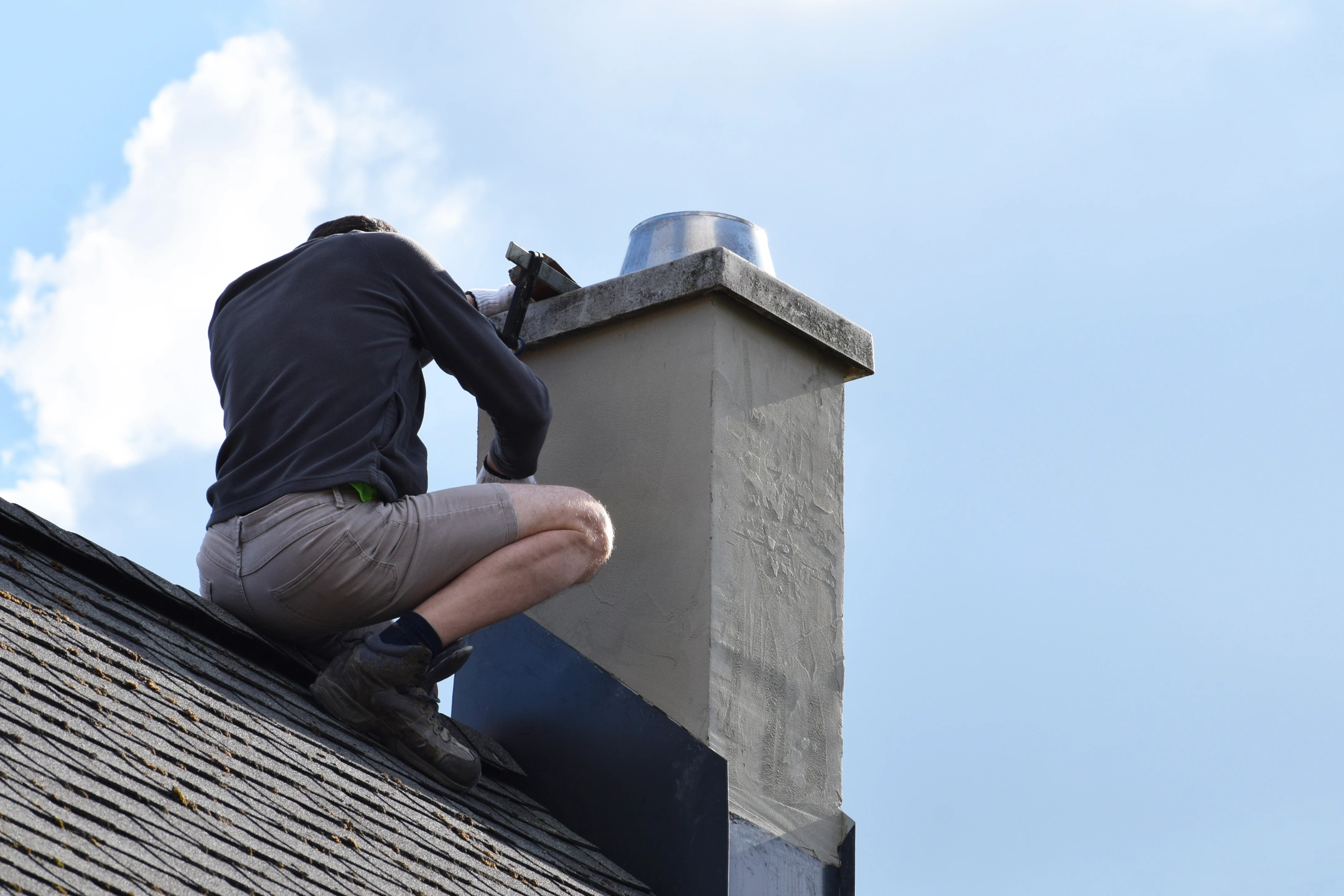
Flashing is a thin metal material that gets installed in areas of your roof that are more prone to water damage, such as:
- Roof valleys
- Skylights
- Vents
- Chimneys
- Drip edges
If the caulk or nails come loose or the flashing begins to rust, you can quickly develop a water leak.
11) Falling Debris
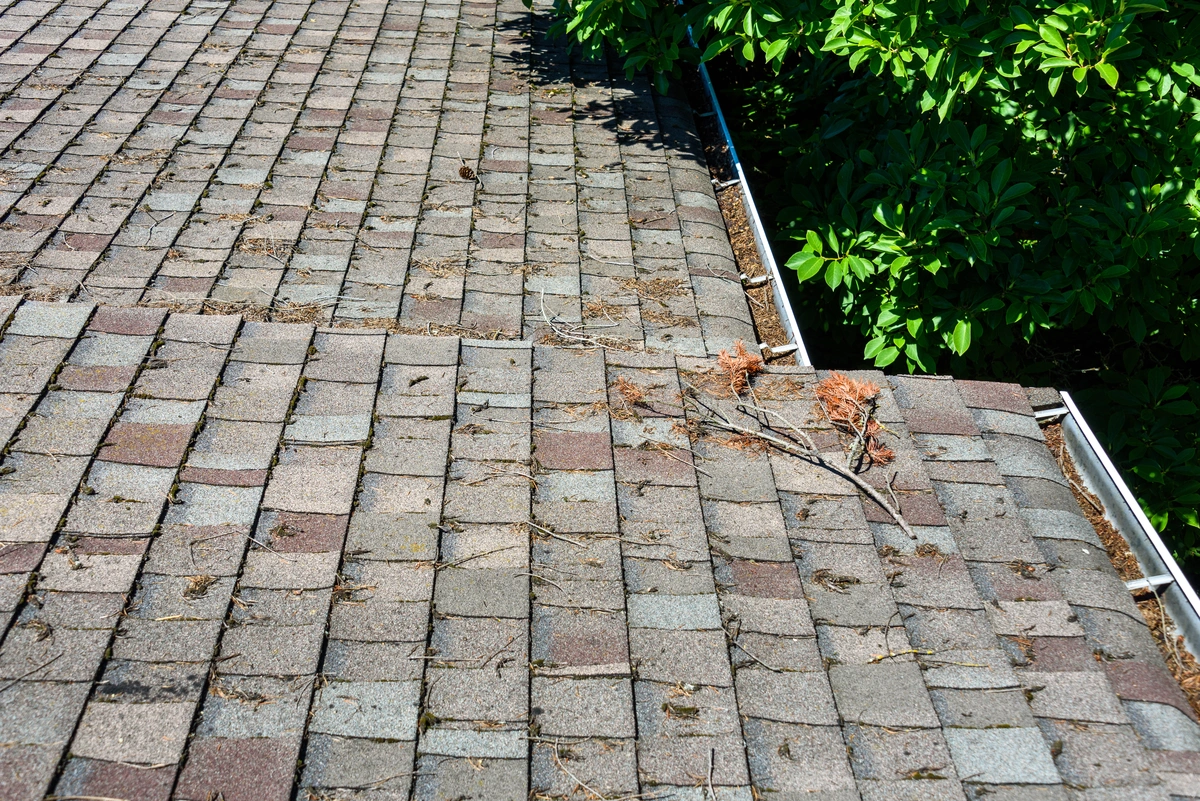
Large tree branches are the biggest culprit of falling debris that can damage your roof. If you’re unlucky enough, a large tree branch may puncture a hole in your roof. It’s important to have professionals trim any branches that extend over your roof so that you’re at less risk. Of course, call a professional roofing contractor immediately if this happens to you.
12) Mold or Algae Growth
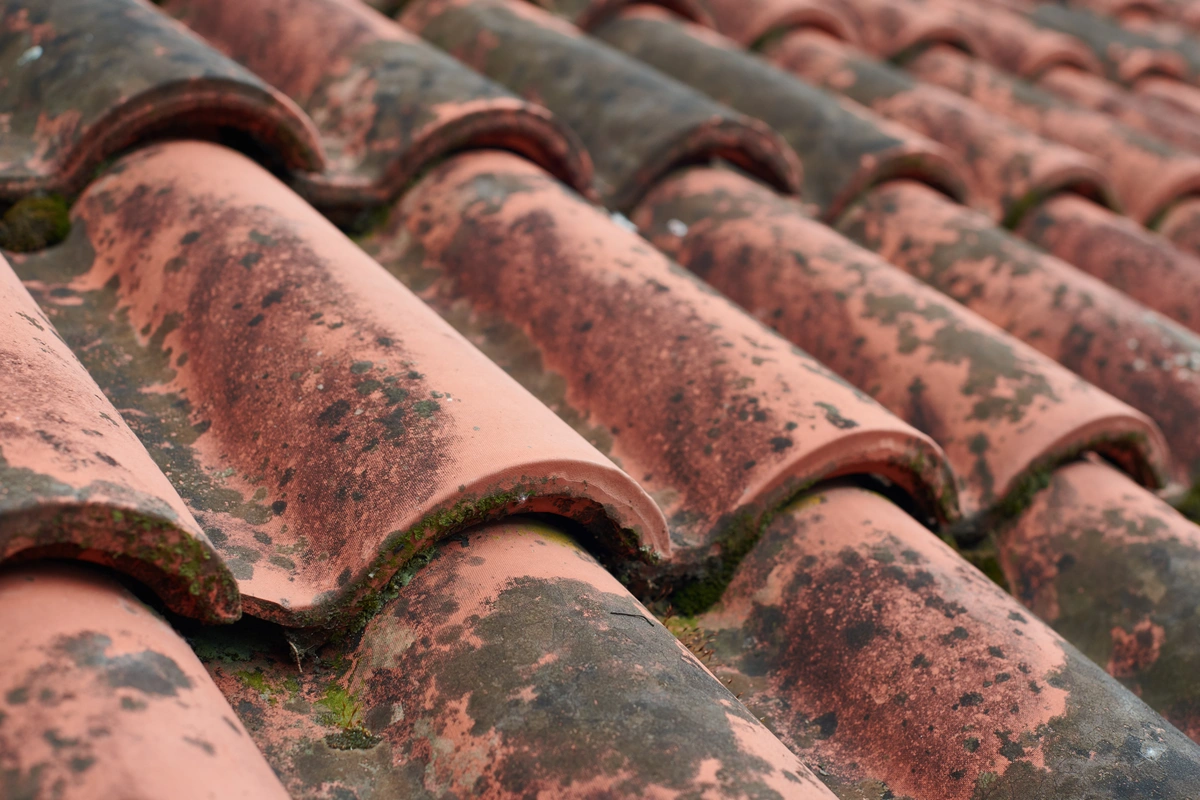
Over many years and decades, algae can begin to grow on your roof. If spores land on your roof and there’s already excess moisture in your roofing system, mold and algae will thrive. Not only is this unsightly, but it presents a health concern and the potential for water damage inside your home.
13) Rotten Roof Deck
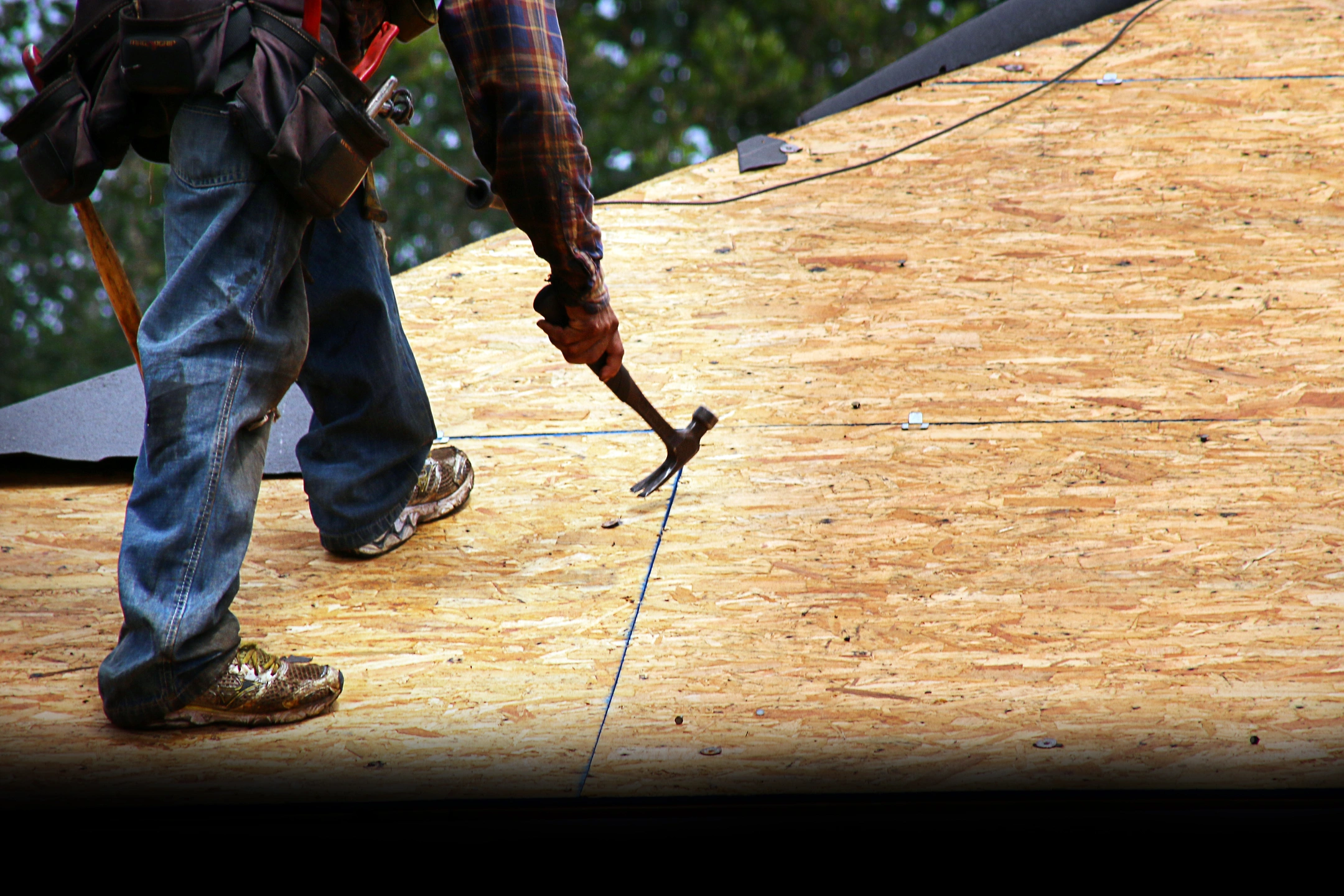
The plywood roof deck is the first layer of your total roofing system. The felt underlayment and your shingles (or other material) are laid on top of the roof decking. Usually, roof decks last a few decades, but if any water seeps under the first few layers, the plywood can start to rot.
Sometimes, this issue isn’t spotted until a roofing contractor is already tearing off your materials for a roof replacement. At its worst, roof deck rot can cause structural damage like roof sagging, which is an incredibly urgent issue that could result in roof collapse if left unaddressed.
14) Clogged Gutters
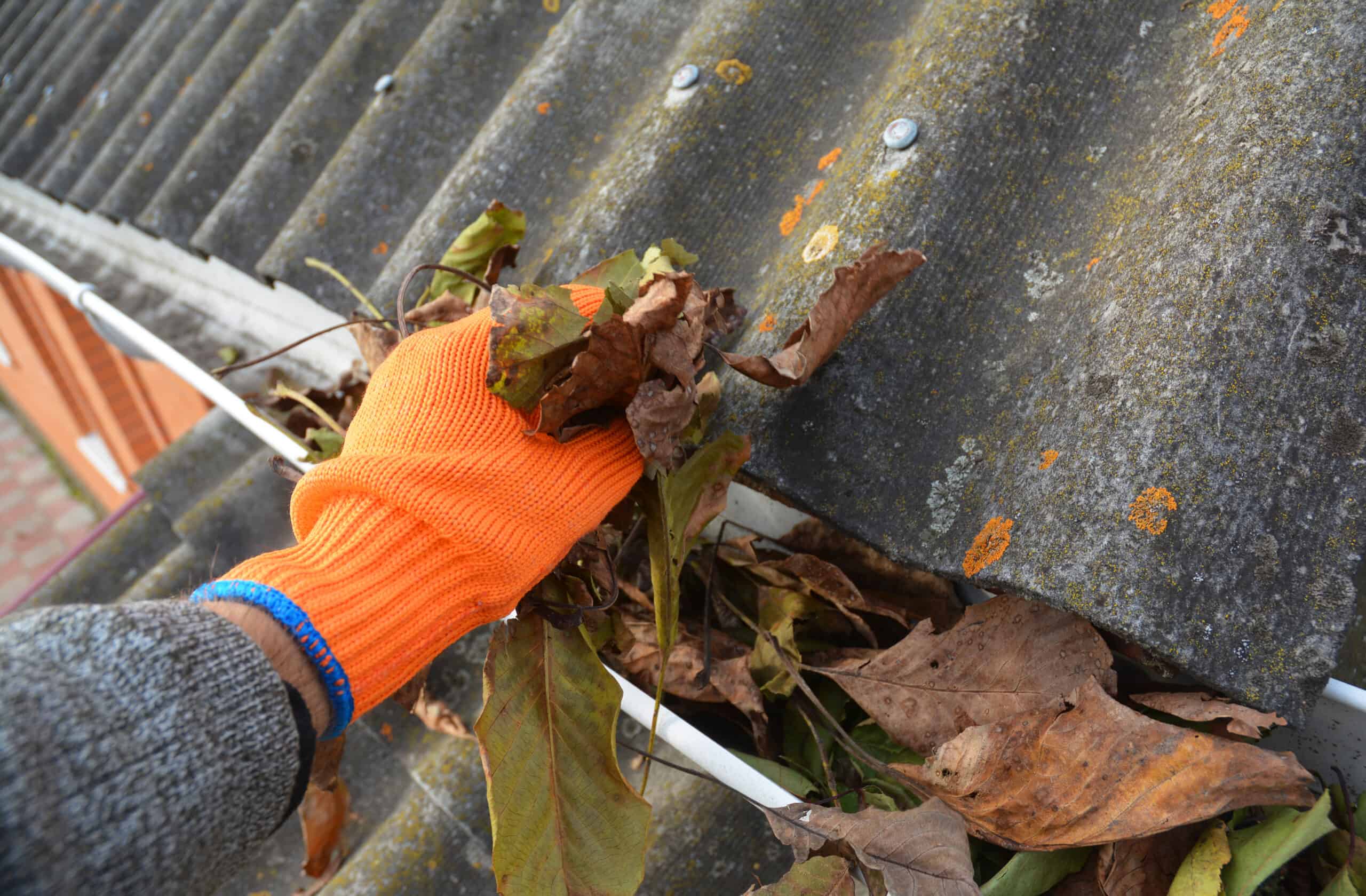
Gutters are essential for a properly working roofing system. If they’re clogged, the water runoff has nowhere to go and can easily get forced under the edge of your roof. Be sure to clean out your gutters at least twice a year.
15) Ice Dams
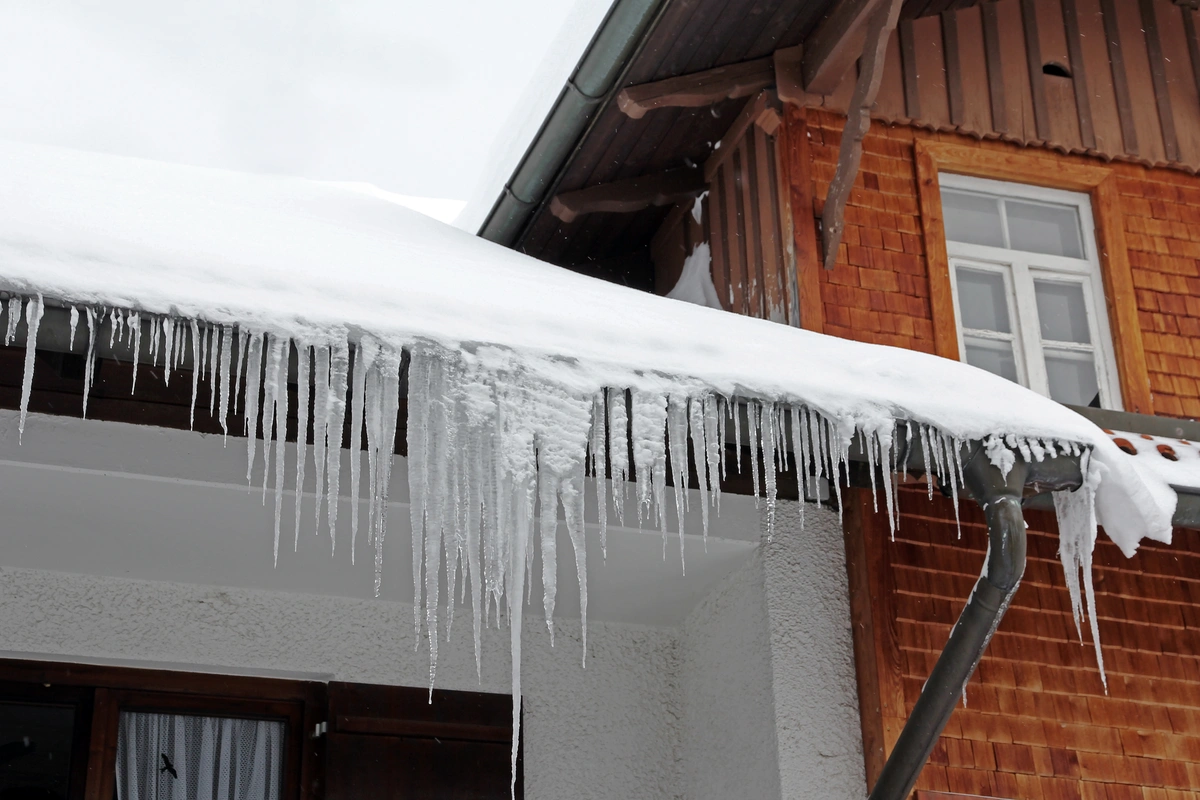
Ice dams aren’t as common in North Carolina as they are in areas with more intense winters, but poor insulation and ventilation are at the core of this issue. If snow or ice melts at the top of your roof, trickles down, and then refreezes at the bottom of your roof, you’re dealing with an ice dam that can cause structural damage to your roof. Add more insulation to your attic if you notice ice dams forming in winter.
The Importance of Regular Roof Maintenance
Roof damage doesn’t always happen overnight. More often than not, it’s the cumulative result of negligence and lack of regular maintenance. To ensure the longevity of your roofing system, it’s essential to adopt a proactive approach rather than a reactive one.
- Routine Cleaning: Over time, debris such as leaves, twigs, and dirt can accumulate on your roof. This can not only lead to mold or algae growth but can also clog your gutters. Cleaning your roof at least once a year can prevent such issues.
- Trimming Overhanging Branches: Trees are a common culprit of roof damage. Ensure that any branches that extend over or near your roof are trimmed regularly. This not only prevents potential damage from falling branches but also reduces the amount of debris that accumulates on the roof.
- Regular Inspections: It’s not always possible for homeowners to spot minor issues. Hiring a professional to conduct a thorough roof inspection annually can help identify potential problems before they escalate.
Why Preventative Measures are Cost-effective
Investing in preventative measures might seem like an added expense, but in the long run, it’s a decision that pays off. Here’s why:
- Minimized Repairs: Addressing minor issues promptly can prevent them from turning into major problems, saving you significant repair costs.
- Extended Roof Life: Regular maintenance ensures that your roof remains in optimal condition, thereby extending its lifespan. This means you won’t have to think about a costly replacement anytime soon.
- Enhanced Home Value: A well-maintained roof boosts the curb appeal of your home. If you ever decide to sell, prospective buyers will be willing to pay more for a house with a roof in excellent condition.
- Peace of Mind: Perhaps the most significant benefit is the peace of mind that comes with knowing that your roof is in top shape, shielding you and your loved ones from the elements.
In conclusion, while it’s essential to be aware of the signs of roof damage, it’s even more crucial to adopt measures to prevent such damage in the first place. At Tidds Roofing, we advocate for a comprehensive approach to roof care, ensuring that your roof remains in tip-top shape year after year.
Your Go-To Team for Roof Damage
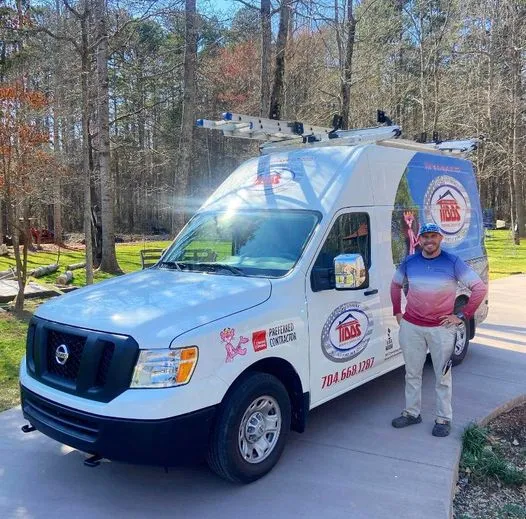
Here at Tidds Roofing, our experienced team is qualified to repair or replace any of the roof damage listed here. We know that no one wants to deal with roofing issues— they can be stressful! That’s why it’s important to have a trustworthy local roofing contractor on call.
If you need roof repairs, a total roof replacement, or insurance claim assistance after a storm, reach out to Tidds Roofing for a free inspection!
